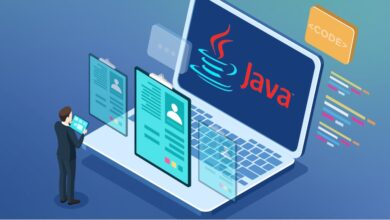Why does Python be Perfect for Machine Learning and Artificial Intelligence?

The IT industry’s new dark is machine learning and artificial intelligence (AI). The capabilities and capacities of artificial intelligence are being expanded while debates over its safety continue to heat up. Artificial intelligence has advanced far beyond the realm of science fiction. It became essential. AI is frequently used to process and analyze massive amounts of data, which helps to manage tasks that are no longer possible to complete manually due to their considerably increasing volume and intensity.
For the best Python training in Vadapalani Chennai, LIVEWIRE is a perfect choice and it gains the trust of students and working professionals. For instance, AI is used in analytics to develop predictions that can assist individuals in developing solid strategies and seeking out more efficient solutions. In order to do market research and forecast where to place capital for greater earnings, FinTech uses AI in investment platforms. The travel sector makes use of AI to personalize recommendations, start chatbots, and improve user experience in general. These examples demonstrate how AI and ML are used to process massive amounts of data to provide a better user experience that is more accurate and personalized.
Table of Contents
How Future Technologies Will Be Shaped by AI and ML
AI and ML are now employed for the processing and analysis of data due to the expansion of its volumes and complexity. To be fair, the human brain is capable of processing huge amounts of data, but its capacity is constrained by the quantity of information it can take in at any given time. This restriction is not applicable to artificial intelligence. Business efficiency, production costs, and productivity are all improved by AI’s more accurate forecasts and insights. It makes sense that many sectors use AI and ML to boost productivity and advance product development.
Given the advantages mentioned above, an increasing number of businesses are willing to use AI. AI is a two-way street since it is used to enhance the analytical process, despite the fact that it is not the easiest technology to develop. There are vast amounts of data that need to be reviewed, thus the AI solution must be able to manage the high-loaded process effectively and swiftly. For it to work well, the appropriate language must be chosen for its creation. The best one will be the one that can handle complex operations, has a straightforward syntax, and is easy to support.
Python – The Top programming language for AI and ML
Big corporations invest in ML and AI as these technologies are used in more and more channels and industries, and as a result, there is an increasing need for professionals with these skills. Based on trend search results on indeed.com, Jean Francois Puget, a member of IBM’s machine learning division, stated his belief that Python is the most well-liked language for AI and ML. Python is the primary programming language for AI and ML, according to a graph by Francois Puget.
The advantages of Python have been extensively researched, and it has been determined why you should choose Python to implement your AI and ML applications.
1. A strong environment for libraries
One of the key causes of Python being the most often used programming language for AI is the fantastic selection of libraries. A library is a module or collection of modules that have been released by various sources, such as PyPi, and which contain pre-written code that enables users to access certain functionality or carry out specific tasks. Python libraries offer fundamental components so that developers don’t always have to write them from scratch.
Python’s libraries enable you to access, handle, and transform data, which is necessary for machine learning (ML) applications. Some of the most popular libraries for ML and AI are as follows:
- Scikit-learn can handle fundamental ML algorithms including clustering, classification, regression, linear and logistic regressions, and others.
- Pandas for advanced data analysis and structures. The data can be combined and filtered, as well as gathered from other outside sources like Excel.
- For deep learning, use Keras. It uses both the computer’s CPU and GPU, enabling quick calculations and prototyping.
2. A low barrier to the entrance
Working in the ML and AI sector requires dealing with a lot of data, which you must analyze in the most practical and efficient manner. The low entry barrier makes it possible for more data scientists to quickly learn Python and begin utilizing it for AI development without investing a lot of time in doing so.
The similarity between the Python programming language and standard English makes learning easier. Due to the clear relationships between the system elements and its simple syntax, it enables you to work with complex systems with ease.
3. Adaptability
A python is a fantastic option for machine learning because of its flexibility:
- It gives users the choice of using scripting or OOPs.
- Additionally, developers can make any changes without having to recompile the source code and can see the results right away.
Furthermore, flexibility enables programmers to select the programming paradigms with which they are most comfortable and even combine these paradigms to best solve various problems.
4. Platform neutrality
Python is not only simple to learn and comfortable to use, but it is also incredibly adaptable. In other words, Python may be used to construct machine learning applications on any platform, including Windows, macOS, Linux, Unix, and twenty-one more. Again, this streamlines and makes the process more convenient while also saving time and money for testing on other platforms.
5. Ability to Read
Every Python developer can comprehend the code of their peers and alter, copy, or share it because Python is relatively simple to read. Professionals in AI and ML may communicate algorithms, ideas, and tools more effectively when there is no ambiguity, inaccuracy, or clashing paradigms.
Additionally, there are tools like IPython, an interactive shell that supports the work process by adding extra capabilities like testing, debugging, tab completion, and others.




